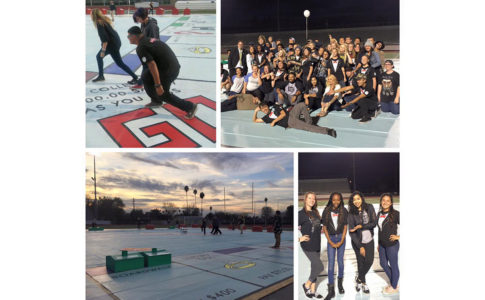No matter what type of marching season you’re dealing with—indoor vs. outdoor or in-person vs. virtual—facial expressions are an indispensable part of a performer’s repertoire. Everyday facial expressions are comfortable for us but aren’t dramatic enough to be seen and interpreted from far away. More extreme expressions can be uncomfortable and difficult to maintain. Try these tips to help you emote your facial expressions.
Train Facial Muscles
You use muscles in your face to create and maintain your facial expressions, so you need to train those muscles just like you would train the muscles for tossing a rifle or spinning a flag. Practice moving your face in new ways and holding it. Use a mirror, so you can see and feel each expression. It’s going to feel weird, and that’s okay! Practicing on your own and working through the discomfort will help you build confidence and muscle memory in order to maintain your expression once you add in dance and equipment.
Focus on Eyes and Eyebrows
During the past year, with masks being necessary in group settings, the eyes and eyebrows have become the only way that audiences can read facial expressions. If you’re performing masked, practice expressions with your mask on also, so you can make sure your eyes are getting everything across. Practice raising and lowering your brows, widening and narrowing your eyes, and mixing and matching combinations to see what works and what doesn’t.
Let Go
These expressions feel weird for everyone at some time or another. The rest of your team is in the same boat (or has been at some point) and understands.
Your instructor needs to see your expressions in order to make sure that you are matching the mood of the show. Unleash those facial expressions in rehearsal with confidence! When everyone is expected to do the same thing, then the people who aren’t exaggerating their expressions stand out in a bad way. Every instructor I know would rather ask their performers to give less than to give more.


